Daniel O'Neill
Conformational eyelid disorders in dogs under primary veterinary care in the UK - Epidemiology and clinical management
O'Neill, Daniel; Mustikka, Minna P.; Brodbelt, Dave C.; Church, David B.; Vaattovaara, Vilma
Authors
Minna P. Mustikka
Dave C. Brodbelt
David B. Church
Vilma Vaattovaara
Contributors
Dan G. O'Neill
Composer
Minna P. Mustikka
Accompanist
Dave C. Brodbelt
Conductor
David B. Church
Accompanist
Vilma Vaattovaara
Curator
Abstract
Introduction Natural eyelid conformation is essential for normal function and health of the ocular surface. However, many modern dog types are deliberately bred for abnormal eyelid conformation associated with severe health and welfare issues. This study aimed to report the prevalence, demographic risk factors and clinical management under primary veterinary care for conformational eyelid disorders in dogs. Methods The study explored the anonymised clinical records of all dogs under UK primary veterinary care within the VetCompass Programme during 2019. Risk factor analysis used multivariable logistic regression modelling. Results From 2,250,417 dogs under primary veterinary care in 2019, the analysis included a random sample of 3,029 confirmed conformational eyelid disorder cases that included 2,752 (90.86%) entropion and 344 (11.36%) ectropion cases. After accounting for the subsampling process, the annual prevalence for overall conformational eyelid disorder in dogs was 0.36% (95% CI: 0.35–0.37). The annual prevalence for entropion in dogs overall was 0.33% (95% CI: 0.32–0.34). Breeds with highest annual prevalence for entropion were Shar-Pei (15.41%, 95% CI 14.00–16.91), Chow Chow (9.28%, 95% CI 7.64–11.14) and Neapolitan Mastiff (6.88%, 95% CI 3.02–13.14). The estimated annual prevalence for ectropion in dogs overall was 0.04% (95% CI: 0.04–0.05). Breeds with the highest annual prevalence for ectropion were Neapolitan Mastiff (4.30%, 95% CI 1.41–9.77), Saint Bernard (1.72%, 95% CI 0.86–3.05) and Basset Hound (1.59%, 95% CI 0.94–2.49). Surgical management was carried out for 414/2275 (18.20%) of the incident (2019) entropion cases and 12/305 (3.93%) of the incident (2019) ectropion cases. Conclusions Normalisation of conformation-related health issues in certain high profile dog breeds have been discussed as a canine welfare priority for over half a century. The current results suggest that substantial work remains to be done to ensure good innate health for all dogs.
Citation
O'Neill, D., Mustikka, M. P., Brodbelt, D. C., Church, D. B., & Vaattovaara, V. (2025). Conformational eyelid disorders in dogs under primary veterinary care in the UK - Epidemiology and clinical management. Herpetological Conservation and Biology, 20(6), e0326526. https://doi.org/10.1371/journal.pone.0326526
| Journal Article Type | Article |
|---|---|
| Acceptance Date | Jun 3, 2025 |
| Online Publication Date | Jun 30, 2025 |
| Publication Date | Jun 30, 2025 |
| Deposit Date | Jul 2, 2025 |
| Publicly Available Date | Jul 2, 2025 |
| Journal | PLOS ONE |
| Electronic ISSN | 1931-7603 |
| Publisher | Herpetological Conservation and Biology |
| Peer Reviewed | Peer Reviewed |
| Volume | 20 |
| Issue | 6 |
| Pages | e0326526 |
| DOI | https://doi.org/10.1371/journal.pone.0326526 |
| Publisher URL | https://doi.org/10.1371/journal.pone.0326526 |
| Additional Information | VetCompass |
Files
Conformational eyelid disorders in dogs under primary veterinary care in the UK - Epidemiology and clinical management
(2.2 Mb)
PDF
Licence
http://creativecommons.org/licenses/by/4.0/
Publisher Licence URL
http://creativecommons.org/licenses/by/4.0/
Version
VoR
You might also like
Conformation-associated health in pet rabbits in the UK: A VetCompass cohort study
(2024)
Journal Article
Epidemiology of heat-related illness in dogs under UK emergency veterinary care in 2022
(2024)
Journal Article
Life tables of annual life expectancy and risk factors for mortality in cats in the UK
(2024)
Journal Article
Downloadable Citations
About RVC Repository
Administrator e-mail: publicationsrepos@rvc.ac.uk
This application uses the following open-source libraries:
SheetJS Community Edition
Apache License Version 2.0 (http://www.apache.org/licenses/)
PDF.js
Apache License Version 2.0 (http://www.apache.org/licenses/)
Font Awesome
SIL OFL 1.1 (http://scripts.sil.org/OFL)
MIT License (http://opensource.org/licenses/mit-license.html)
CC BY 3.0 ( http://creativecommons.org/licenses/by/3.0/)
Powered by Worktribe © 2025
Advanced Search
